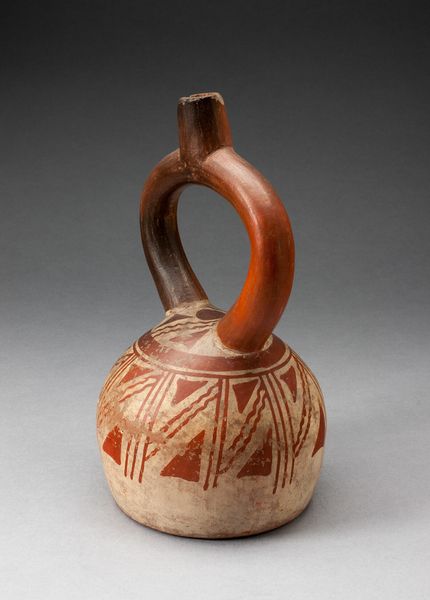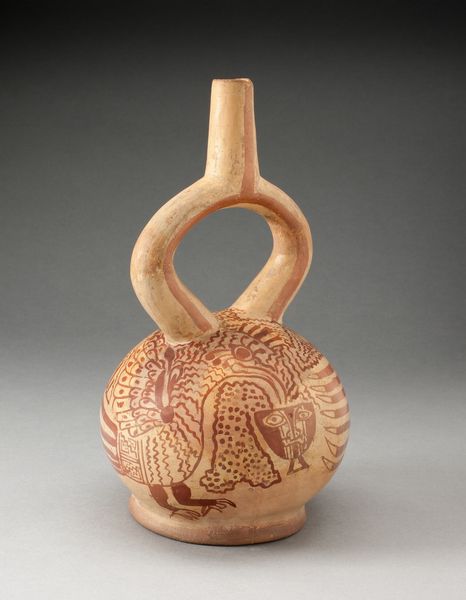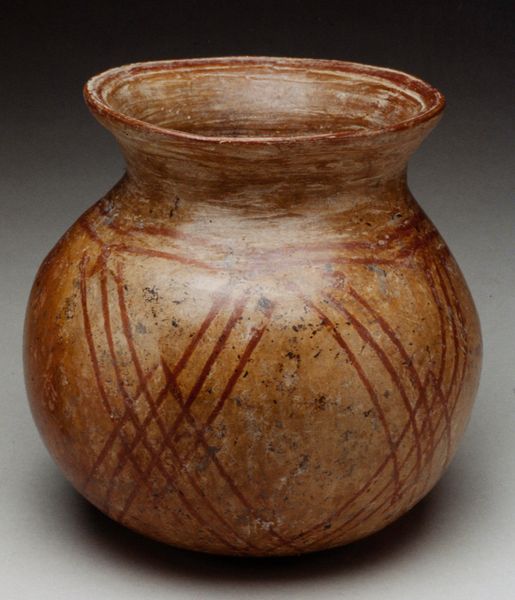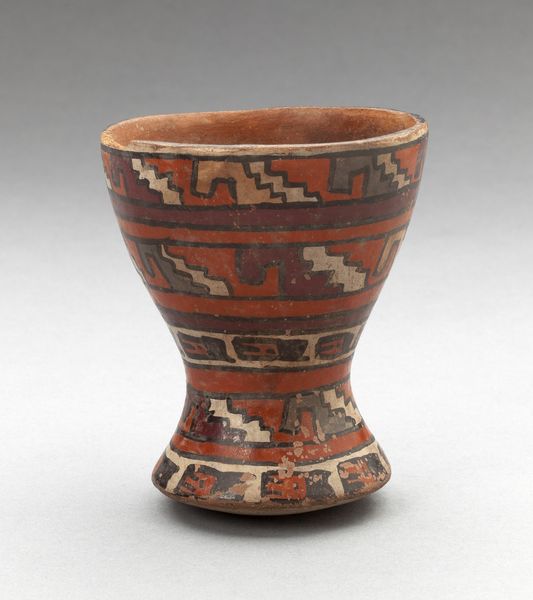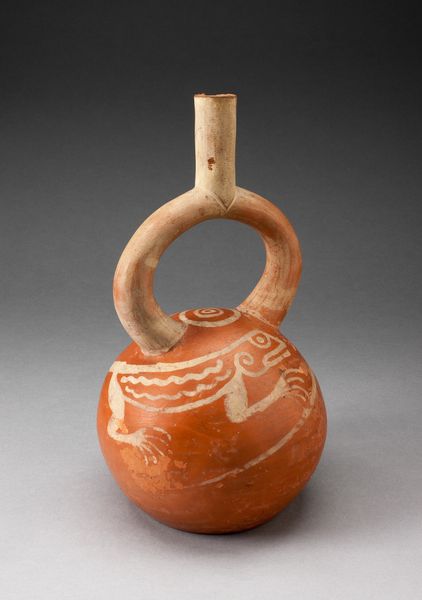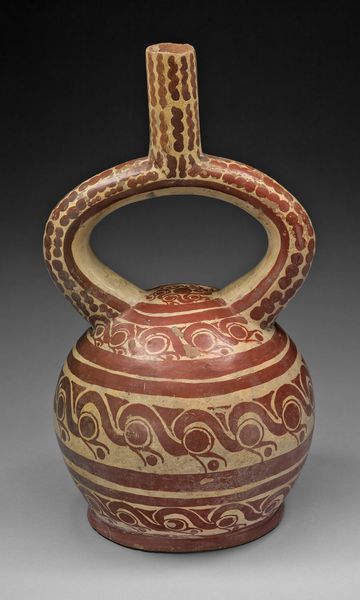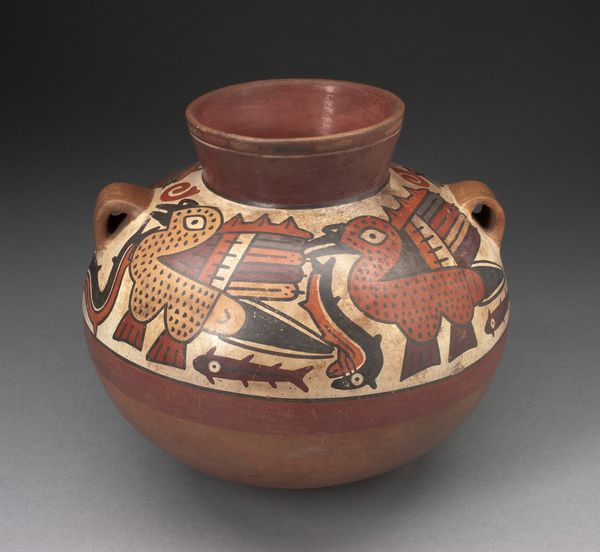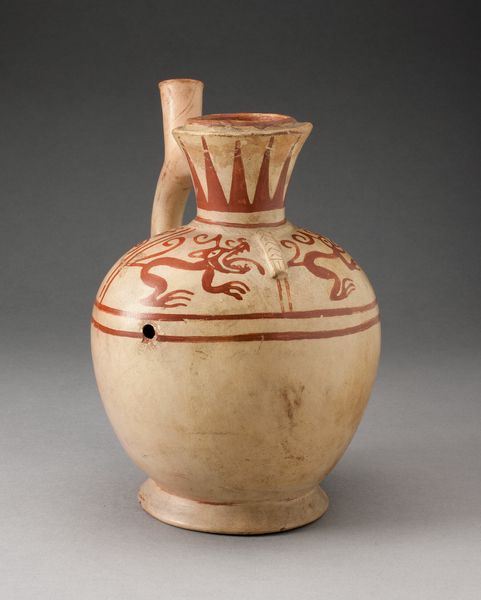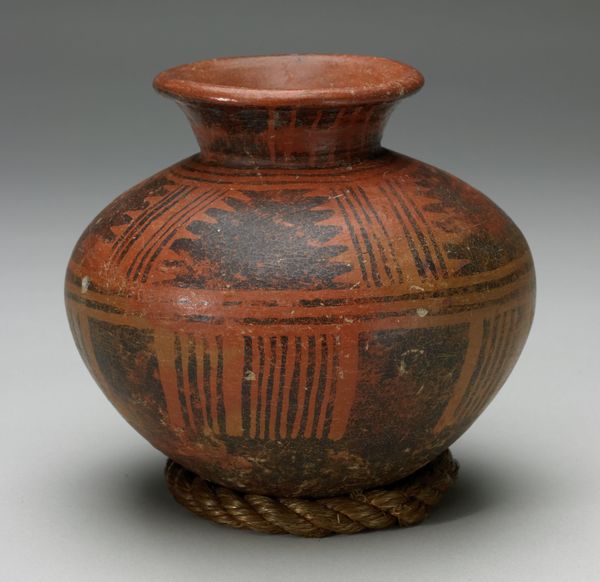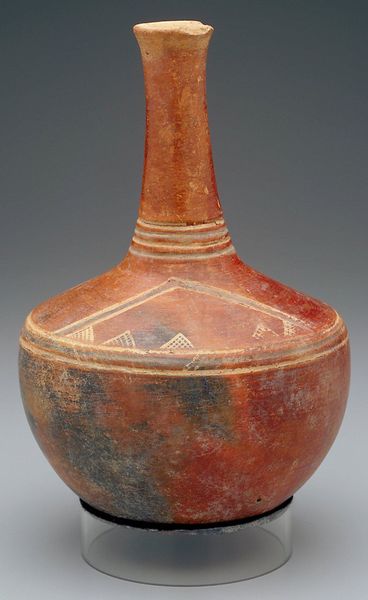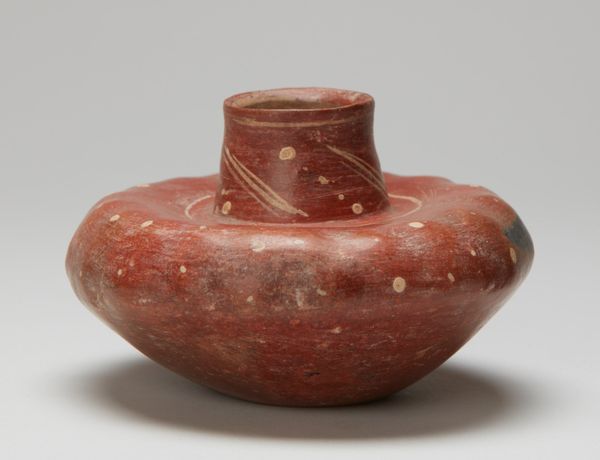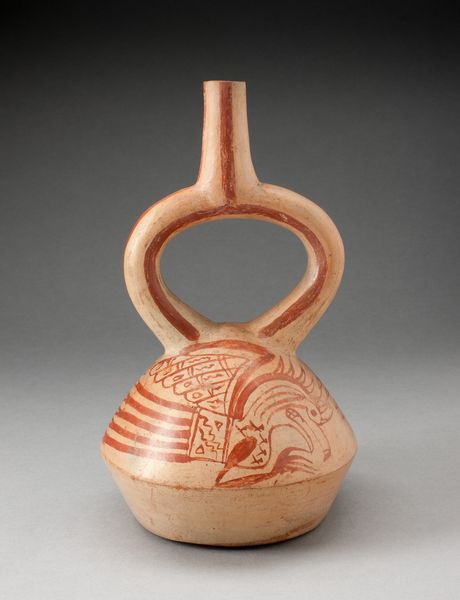
ceramic, earthenware
#
ceramic
#
earthenware
#
ceramic
#
indigenous-americas
Dimensions: 24.1 × 20.3 cm (9 1/2 × 8 3/4 in.)
Copyright: Public Domain
Curator: At first glance, this piece exudes a certain serenity, doesn't it? The curved form combined with what appears to be fluid ornamentation... Editor: It's called "Bottle with Underwater Serpents", a ceramic earthenware work possibly from the Mississippian culture, dated sometime between 1300 and 1500. Currently it resides here at the Art Institute of Chicago. Curator: The use of simple earthenware is interesting, isn't it? Functional material, yet elevated through form and decoration. The hand-painted serpent motifs really energize the entire surface. Editor: Absolutely, and let's not forget this vessel's cultural significance. Imagine the hands that molded this clay, sourced perhaps right from the riverbanks, the knowledge passed down through generations of potters, and the firings to harden it... it's really important to look beyond surface appearances, and consider that history is embedded right within the clay. Curator: Indeed. The undulating forms on the neck create a sort of dynamism. Notice the repetitive spiral design, how it ascends from the bulbous base. And, I think, a more abstract or perhaps geometrical element dominates on the container. Editor: Right. So how do you interpret those decorative elements – are they purely aesthetic? Or might they hold symbolic meaning, perhaps a connection to water deities and Mississippian cosmology? Think about this bottle as an object that played a specific role within its society: how was this bottle consumed, and by whom? These details enrich my understanding of it as an artwork. Curator: Agreed, understanding context is key, although the formal arrangement certainly speaks for itself. The limited color palette actually contributes to the impact. The contrasting tones of the earthenware versus painted areas certainly give it rhythm and contrast. Editor: Certainly. And the way it was fired affects it! These earthenwares tend to be under fired, causing irregularities. These accidental occurrences give us insights into available tools, resources and even perhaps constraints of the artist. Curator: Very true. It’s that interplay between deliberate artistic intention and happenstance that really defines its beauty. Editor: Yes, thinking about its creation makes me appreciate its beauty. It is so important to reflect upon its labor.
Comments
No comments
Be the first to comment and join the conversation on the ultimate creative platform.
